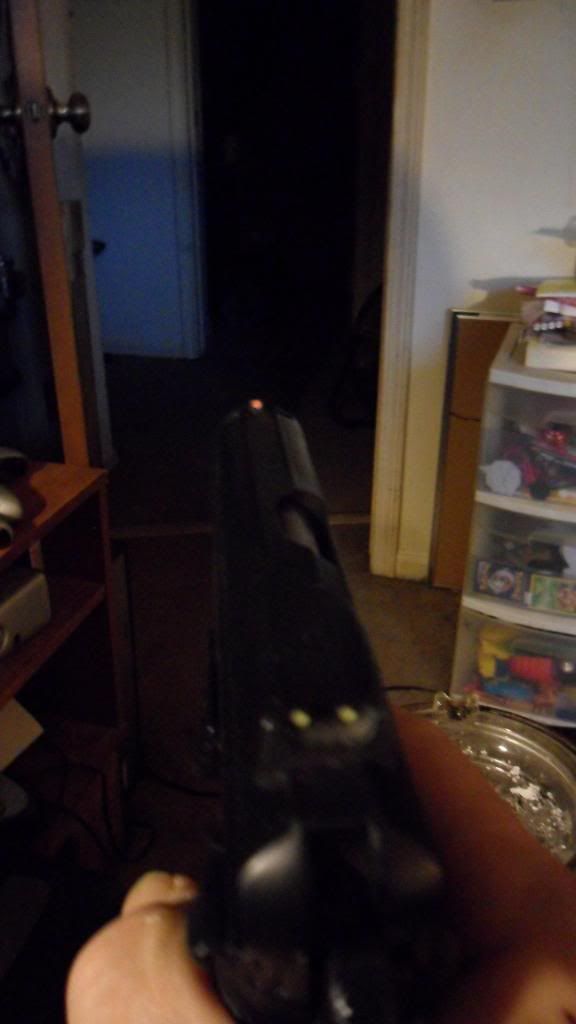I absolutely agree that precise sight alignment is critical to accurate pistol shooting.
While there are exceptions,generally,the more time you have to aim,the less likely it is that self defense is the issue.
The impact of the violence you are defending against is likely to disturb your aim if you do not shoot first.
If you miss,you waste time,ammo,and you might hurt the wrong person.Plus,your threat is unharmed.Who hits first is important.
When I concentrate,my Trijicon front sight has a sharp,black outline of a square blade.It can punch nice bullseye groups.
In bright daylight,I have a white bead in the top middle of that blade that is very easy to pick up.
It is a lot like the picture of the gold dot in a previous post.
If I just draw and start pulling the trigger,I might get fair results pointing,and I might not.
If I find the front sight,and put the slide and front sight on COM of my threat,and make a proper quick,surprise break trigger press,odds are good for me.
I did not invent this idea.I was paying attention to this man:
http://youtu.be/oVBV-8Rv2II
Its Jeff Coopers first tape in Defensive Pistolcraft.
I'm not intellectualizing it.I have this handgun in my hand.I am delighted at how fast I can acquire my front sight.

